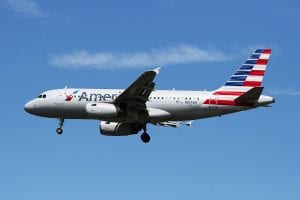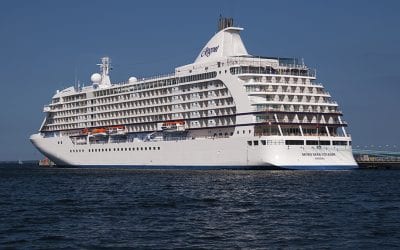It’s time for the airlines and government to enforce animal rules in planes for service animals and pets, plus stop flight crews from making up their own animal rules inflight.
 Proper enforcement of airline and government rules for passengers with service animals to help with their disabilities is critical. Airlines and the government must also stop flight crews from enforcing fake animal rules, rules that can harm passengers.
Proper enforcement of airline and government rules for passengers with service animals to help with their disabilities is critical. Airlines and the government must also stop flight crews from enforcing fake animal rules, rules that can harm passengers.
The problem of enforcement seems to be universal to airlines across the globe. Take for example, an incident in Canada last month. Porter Airlines was flying from Toronto to Edmonton. Georgina Villeneuve was on board. She is deaf and uses a service animal. Being hearing disabled myself, though not as bad as Ms. Villeneuve, I understand what she’s going through and why her service dog is so important for her.
Service animals are critically important to help many people with disabilities. Flight attendants can’t be allowed to make up their own rules denying the rights of disabled passengers with service animals.
A flight attendant on her flight ordered Ms. Villeneuve to put her dog under the seat in front of her and threatened her with removal if she didn’t comply. Eventually, Ms Villeneuve and her service dog, Maggie, were removed from the plane.
The problem is that the flight attendant broke the rules of Porter Airlines and the Canadian Transportation Agency. According to the Agency,
“All carriers must ensure that the seat of a passenger traveling with a service dog provides sufficient floor space for the service dog to lie down at the passenger’s feet in a manner that ensures the safety and well-being of the passenger and the service dog.”
Moreover,
“The floor space must be large enough for the passenger’s feet and their service dog and avoid causing either of them injury while ensuring that they can travel in reasonable comfort.”
Canada’s air transportation rules are clear and the Porter Airlines flight attendant ignored them and made up their own rules.
 Under Canada’s air transportation regulations, Maggie was allowed to stay at Ms. Villeneuve’s feet. Service dogs are not considered pets under Canadian law. In fact, if the room at Ms. Villeneuve’s feet was insufficient, the airline is required to provide Ms. Villeneuve and Maggie seating with sufficient space to accommodate them.
Under Canada’s air transportation regulations, Maggie was allowed to stay at Ms. Villeneuve’s feet. Service dogs are not considered pets under Canadian law. In fact, if the room at Ms. Villeneuve’s feet was insufficient, the airline is required to provide Ms. Villeneuve and Maggie seating with sufficient space to accommodate them.
Requiring Maggie to go under the seat in front of Ms. Villeneuve was a violation of Canadian airline regulations. The flight attendant made up their own rules instead of complying the real rules.
U.S. rules for service animals in aircraft are similar to Canadian rules, though not quite as generous.
Let’s examine Emotional Support animal issues. In the U.S., emotional support animals are no longer an animal category for airlines. On U.S. scheduled airlines, there are only service animals and pets. Emotional support animals fall into the pet category.
Service animals have to be trained to perform tasks for the disabled passenger and to behave when in public. Emotional support animals have no such training.
Service animals have to be specifically trained to perform tasks for the benefit of a qualified individual with a disability, including: physical, sensory, psychiatric, intellectual, or other mental disability. It’s important to emphasize the training aspect of service animals. They have to be trained to both perform the tasks necessary to assist the passenger/owner with a disability and to be well-behaved.
A passenger with a service animal must submit the U.S. DOT Service Animal form to the airline at least 48 hours before their flight or present it completed at the airport on the day of travel. The airline has to approve it before the service animal may fly with the passenger. On the form, the passenger must certify that their service animal is fully trained to perform necessary tasks for the passenger and that it’s trained to behave. The passenger agrees through the form that the service animal must be restrained at all times in the airport and the aircraft.
Emotional support animals aren’t trained and aren’t service animals. If a passenger lies on the service animal form saying their emotional support animal is a service animal, they are subject to fines and other penalties.
The Porter airline flight attendant isn’t the only one making up their own rules about animals in aircraft cabins. It seems as though every time I fly there are at least a couple of pets on my flight and like many individuals I’m beyond allergic to some animals. For me, it’s cats.
Passengers with pets on planes must obey specific regulations which include keeping them in their carrier for the entire flight.
In the U.S. the airlines have strict rules for bringing pets into aircraft cabins.
American Airlines’ rules for pets are typical of airlines in the U.S.
American allows pets in the plane’s cabin, but they are limited to cats and dogs and must meet size, age and destination requirements. In the aircraft cabin, unlike for service dogs, which can be at the feet of the passenger, or if small enough, in their lap, American Airlines states,
“Your pet stays in the pet carrier and under the seat in front of you the entire flight.”
It’s important to understand that pets must remain in their pet carrier for the entire duration of their flight. They can’t be out of their carrier in the passenger’s lap even if restrained. They aren’t permitted to run free in the cabin.
Pets are not allowed to run about the aircraft’s cabin. Even service animals must be restrained and not permitted to run around the cabin.
In fact, even service animals aren’t permitted to move around aircraft cabins freely. Service animals are required to be “harnessed, leashed or tethered at all times.” In addition, service animals “must be clean and well-behaved.”
Despite those rules, on a variety of airlines in the U.S. I’ve seen pets, both dogs and cats, allowed to be removed from their pet carriers and held on passengers’ laps, generally unrestrained, and even allowed to be on the loose in the aircraft cabin. A couple of times in recent years, I’ve had a cat, loose in the plane’s cabin, rub against me, causing me to have a serious allergic reaction which required me to take my allergy medication. On one occasion, my allergic reaction was so severe, I came close to needing to use my Epi-Pen injectors.
I complained to the flight attendants on my flight to no avail until my allergic reaction became severe. Flight attendants need to understand that they are required to enforce the rules. Pets on the loose can make some passengers unfairly miserable on their flights. Flight attendants don’t have the power to make up their own rules.
When flight crews fail to enforce airline animal rules some passengers are unfairly deprived of their rights and can run into serious health concerns.
When flight attendants fail to enforce airline animal rules and government regulations, invariably some passengers are unfairly deprived of their rights and/or put into difficult situations concerning their health and/or well-being.

(Image: American Airlines A319 landing at Philadelphia International Airport. Copyright © 2018 NSL Photography. All Rights Reserved. All TDM and AI Training are Prohibited.)
READ ALSO:
Use these 17 winter drive tips during, “Family holiday road trips”
Free-range kids are becoming a problem at the airport. What’s the solution?
After many years working in corporate America as a chemical engineer, executive and eventually CFO of a multinational manufacturer, Ned founded a tech consulting company and later restarted NSL Photography, his photography business. Before entering the corporate world, Ned worked as a Public Health Engineer for the Philadelphia Department of Public Health. As a well known corporate, travel and wildlife photographer, Ned travels the world writing about travel and photography, as well as running photography workshops, seminars and photowalks. Visit Ned’s Photography Blog and Galleries.



